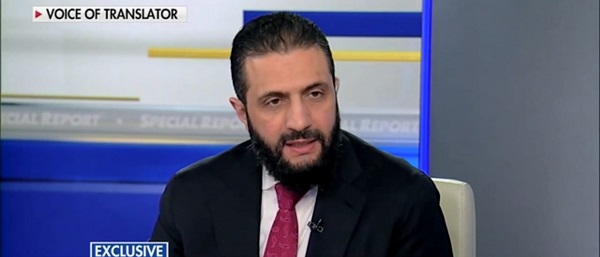International
Wealthy tourists allegedly paid money to ‘massacre’ civilians in Bosnia during the 1990s

From LifeSiteNews
The tourists allegedly paid £70,000 to gun down civilians during the Bosnian War of 1992-1995, with the Serbs charging extra to shoot children.
Italian prosecutors are investigating claims that wealthy Western tourists embarked on so-called “human safari” hunting trips to the Bosnian capital of Sarajevo during the Bosnian War of 1992-1995. According to press reports, rich “manhunters” allegedly “paid members of the Bosnian Serb army for weekend trips to the besieged city where they participated in the massacre of residents for pleasure.”
The wealthy tourists allegedly paid £70,000 to gun down civilians during the four-year siege of Sarajevo, in which over 10,000 people died by shelling and sniper fire; the Serbs charged extra to shoot children. The Daily Mail stated that Milanese prosecutors are looking into the “wealthy foreign gun enthusiasts” who traveled to the warzone for “sniper tourism” by flying from Trieste to Belgrade on the Serb airline Aviogenex and were charged up to £88,000.
The claims originated in a 2022 documentary by Slovenian filmmaker Miran Zupanic titled Sarajevo Safari, in which he explored claims that wealthy customers from Italy and other nations flew in to gun down innocent people during the Bosnian nightmare. The tourists allegedly paid members of Radovan Karadžić’s army to escort them to the surrounding the city, where they would set up position and fire at residents. Karadžić was recently sentenced to 40 years in prison for genocide.
The documentary claims that the “safari manhunters” came from Canada, the United States, France, Germany, and Russia, as well as Italy.
The claims are difficult to parse because the killing of civilians by Serb snipers was incredibly common, with the infamous “Sniper Alley” Meša Selimović Boulevard, the main road into the city, turning into a shooting range for the besiegers. The claims in the film are based on the testimony of a Slovenian who worked for an American agency during the war; a retired Bosnian intelligence officer; and three surviving victims. A U.S. Marine also recounted seeing wealthy non-military snipers being escorted into the warzone.
The tourists, described by one interviewee as “bored millionaires” who wanted to hunt people like they “hunted deer,” were allegedly taken by Serb military personnel through UN-protected routes or tunnels, sometimes disguised as aid workers or journalists, sometimes wearing civilian clothing. Estimates indicate dozens of tourists involved, with potentially hundreds of civilian victims.
Now a 17-page legal complaint has been submitted by Milanese writer and journalist Ezio Gavazzeni, with backing from Guido Salvini, a former magistrate, and Benjamin Karic, who served as mayor of Sarajevo from 2021 to 2024. Gavazzeni stated that the Bosnian Attorney General had “shelved an investigation into the ‘sniper tourism’” due to “the difficulty of probing such a case in a country still deeply scarred and divided by war,” although the Bosnian authorities have promised full cooperation with the case.
“We are talking about wealthy people, with reputations—businessmen—who during the siege of Sarajevo paid to kill unarmed civilians. They left Trieste for a manhunt and then returned to their respectable daily lives,” Gavazzeni told the press. The Serbs have denied the allegation, calling it “propaganda”; the Hague Tribunal found insufficient evidence.
Lead prosecutor Alessandro Gobbi, however, is “understood to have a list of several people who can provide testimony,” and Gavazenni stated that up to 100 tourists could have been involved; the case specifically cites the Milanese owner of a cosmetic surgery clinic, as well as others from Trieste and Turin. A Bosnian intelligence agent, says Gavazenni, has agreed to serve as a witness, and has claimed that classified files with evidence are still in existence.
According to the Daily Mail: “Other witnesses include a Slovenian intelligence official, victims, and a wounded firefighter who, during the 2002 trial of Serbian leader Slobodan Milosevic in The Hague, described ‘tourist shooters’ with distinctive clothing and weapons that distinguished them from Serbian soldiers.” Now these claims will finally get the thorough investigation that has long been badly needed.
Energy
Canada’s oilpatch shows strength amid global oil shakeup

This article supplied by Troy Media.
Global oil markets are stumbling under too much supply and too little demand but Canada’s energy sector is managing to hold its own
Oil prices are sliding under the weight of global oversupply and weakening demand, but Canada’s oilpatch is holding steady—perhaps even thriving—as others flounder.
Crude is piling up in tankers, major producers are flooding the system, and demand is fading fast. According to a Windward report cited by Oilprice.com, the amount of oil held in floating storage—tankers sitting offshore waiting for buyers —has hit record highs. Sanctions on Russian and Iranian crude have sidelined entire fleets. Meanwhile, Middle East cargoes continue to pour in, keeping global supply bloated.
Gunvor CEO Torbjorn Tornqvist called the scale “unprecedented,” warning the market would be flooded overnight if sanctions against Russian and Iran were lifted.
And there’s more coming. U.S. crude production has hit a new record of 13.8 million barrels per day in August. And China’s Changqing oilfield just surpassed 20 million tonnes in cumulative output, and national totals have topped 400 million tonnes of oil equivalent this year. More barrels. More pressure. Less price support.
At the same time, demand is slipping. U.S. gasoline use is down. Global shipping activity has slowed. JPMorgan just trimmed its 2025 oil demand forecast by 300,000 barrels per day. China’s manufacturing sector shrank for the seventh month in a row.
Japan’s purchasing index dropped to an 18-month low. And recession fears are back in the headlines.
OPEC+ tried to calm the chaos by announcing a modest increase in output this December, with a pause on future hikes. But the move didn’t move markets. Then Saudi Arabia cut its selling prices to Asia, a clear signal that the kingdom sees weak demand ahead.
In short, it’s messy out there. But not everywhere.
Amid this global downturn, Canada’s energy sector stands out for one rare quality: resilience. While other producers are scaling back or scrambling to adapt, Canada’s oilpatch is quietly outperforming.
A recent CBC News report highlighted the sector’s staying power and why it’s better positioned than its U.S. counterparts. “The companies that have survived here are the companies that have been able to adapt,” said Patrick O’Rourke, managing director at ATB Capital Markets. “It’s effectively Darwinism.”
It’s also smart design. Canada’s oilsands—primarily in Alberta—are expensive to build but cheap to run. Once the upfront costs are covered, producers can keep pumping for decades with relatively low reinvestment. That means even in a
downturn, output stays strong.
Dane Gregoris of Enverus says Canada’s conventional sector is holding up better than the U.S. shale patch. Why? Canadian oil producers operate more efficiently, with fewer legal and logistical barriers tied to land access and ownership than their U.S. shale counterparts. They also benefit from lower operating costs and are less dependent on relentless drilling just to maintain output.
And now, they finally have a way to get more oil out.
The long-delayed Trans Mountain pipeline expansion is finally complete. It delivers Alberta crude to B.C.’s tidewater and, from there, to Asian markets. That access, once a significant limitation for Canadian producers, is now a strategic advantage. It’s already helping offset lower global prices.
Canada’s energy sector also benefits from long-life assets, slow decline rates and political stability. We have a reputation for responsible regulation, but that same system can slow development and limit how quickly we respond to shifting global demand. We can offer a stable, secure supply but only if infrastructure and regulatory hurdles don’t block access to it.
And for Canadians, that matters. Oil prices don’t just fuel industry headlines; they shape provincial and national budgets, drive investment and underpin jobs across the country. Most producers around the world are bracing for pain but Canada may be bracing for opportunity to expand its presence in Asian markets, secure long-term export contracts and position itself as a reliable supplier in a turbulent global landscape.
None of this means Canada is immune. If demand collapses or sanctions lift, prices could sink further. But in a volatile global landscape, Canada isn’t scrambling—it’s competing.
While others slash forecasts, shut wells or hope for an OPEC rescue, Canada’s energy producers are doing something rare in today’s oil market: holding the line.
Toronto-based Rashid Husain Syed is a highly regarded analyst specializing in energy and politics, particularly in the Middle East. In addition to his contributions to local and international newspapers, Rashid frequently lends his expertise as a speaker at global conferences. Organizations such as the Department of Energy in Washington and the International Energy Agency in Paris have sought his insights on global energy matters.
Troy Media empowers Canadian community news outlets by providing independent, insightful analysis and commentary. Our mission is to support local media in helping Canadians stay informed and engaged by delivering reliable content that strengthens community connections and deepens understanding across the country
Business
P.E.I. Moves to Open IRAC Files, Forcing Land Regulator to Publish Reports After The Bureau’s Investigation

Following an exclusive report from The Bureau detailing transparency concerns at Prince Edward Island’s land regulator — and a migration of lawyers from firms that represented the Buddhist land-owning entities the regulator had already probed — the P.E.I. Legislature has passed a new law forcing the Island Regulatory and Appeals Commission (IRAC) to make its land-investigation reports public.
The bill — introduced by Green Party Leader Matt MacFarlane — passed unanimously on Wednesday, CTV News reported. It amends the Lands Protection Act to require IRAC to table final investigation reports and supporting documents in the Legislature within 15 days of completion.
MacFarlane told CTV the reform was necessary because “public trust … is at an all-time low in the system,” adding that “if Islanders can see that work is getting done, that the (LPA) is being properly administered and enforced, that will get some trust rebuilt in this body.”
The Bureau’s report last week underscored that concern, showing how lawyers from Cox & Palmer — the firm representing the Buddhist landholders — steadily moved into senior IRAC positions after the regulator quietly shut down its mandated probe into those same entities. The issue exploded this fall when a Legislative Committee subpoena confirmed that IRAC’s oft-cited 2016–2018 investigation had never produced a final report at all.
There have been reports, including from CBC, that the Buddhist landholders have ties to a Chinese Communist Party entity, which leaders from the group deny.
In the years following IRAC’s cancelled probe into the Buddhist landholders, The Bureau reported, Cox & Palmer’s general counsel and director of land joined IRAC, and the migration of senior former lawyers culminated this spring, with former premier Dennis King appointing his own chief of staff, longtime Cox & Palmer partner Pam Williams, as IRAC chair shortly after the province’s land minister ordered the regulator to reopen a probe into Buddhist landholdings.
The law firm did not respond to questions, while IRAC said it has strong measures in place to guard against any conflicted decision-making.
Reporting on the overall matter, The Bureau wrote that:
“The integrity of the institution has, in effect, become a test of public confidence — or increasingly, of public disbelief. When Minister of Housing, Land and Communities Steven Myers ordered IRAC in February 2025 to release the 2016–2018 report and reopen the investigation, the commission did not comply … Myers later resigned in October 2025. Days afterward, the Legislative Committee on Natural Resources subpoenaed IRAC to produce the report. The commission replied that no formal report had ever been prepared.”
The Bureau’s investigation also showed that the Buddhist entities under review control assets exceeding $480 million, and there is also a planned $185-million campus development in the Town of Three Rivers, citing concerns that such financial power, combined with a revolving door between key law firms, political offices and the regulator, risks undermining confidence in P.E.I.’s land-oversight regime.
Wednesday’s new law converts the expectation for transparency at IRAC, voiced loudly by numerous citizens in this small province of about 170,000, into a statutory obligation.
Housing, Land and Communities Minister Cory Deagle told CTV the government supported the bill: “We do have concerns about some aspects of it, but the main principles of what you’re trying to achieve are a good thing.”
The Bureau is a reader-supported publication.
To receive new posts and support my work, consider becoming a free or paid subscriber.
-

 MAiD1 day ago
MAiD1 day agoQuebec has the highest euthanasia rate in the world at 7.4% of total deaths
-

 Alberta20 hours ago
Alberta20 hours agoHow economic corridors could shape a stronger Canadian future
-

 Alberta1 day ago
Alberta1 day agoWhen Teachers Say Your Child Has Nowhere Else to Go
-

 Daily Caller2 days ago
Daily Caller2 days agoEx-Terrorist Leader Goes On Fox News, Gives Wild Answer About 9/11
-

 Alberta2 days ago
Alberta2 days agoMark Carney Has Failed to Make Use of the Powerful Tools at His Disposal to Get Oil Pipelines Built
-

 Daily Caller1 day ago
Daily Caller1 day agoProtesters Storm Elite Climate Summit In Chaotic Scene
-

 Energy2 days ago
Energy2 days agoFor the sake of Confederation, will we be open-minded about pipelines?
-

 Automotive1 day ago
Automotive1 day agoThe high price of green virtue








